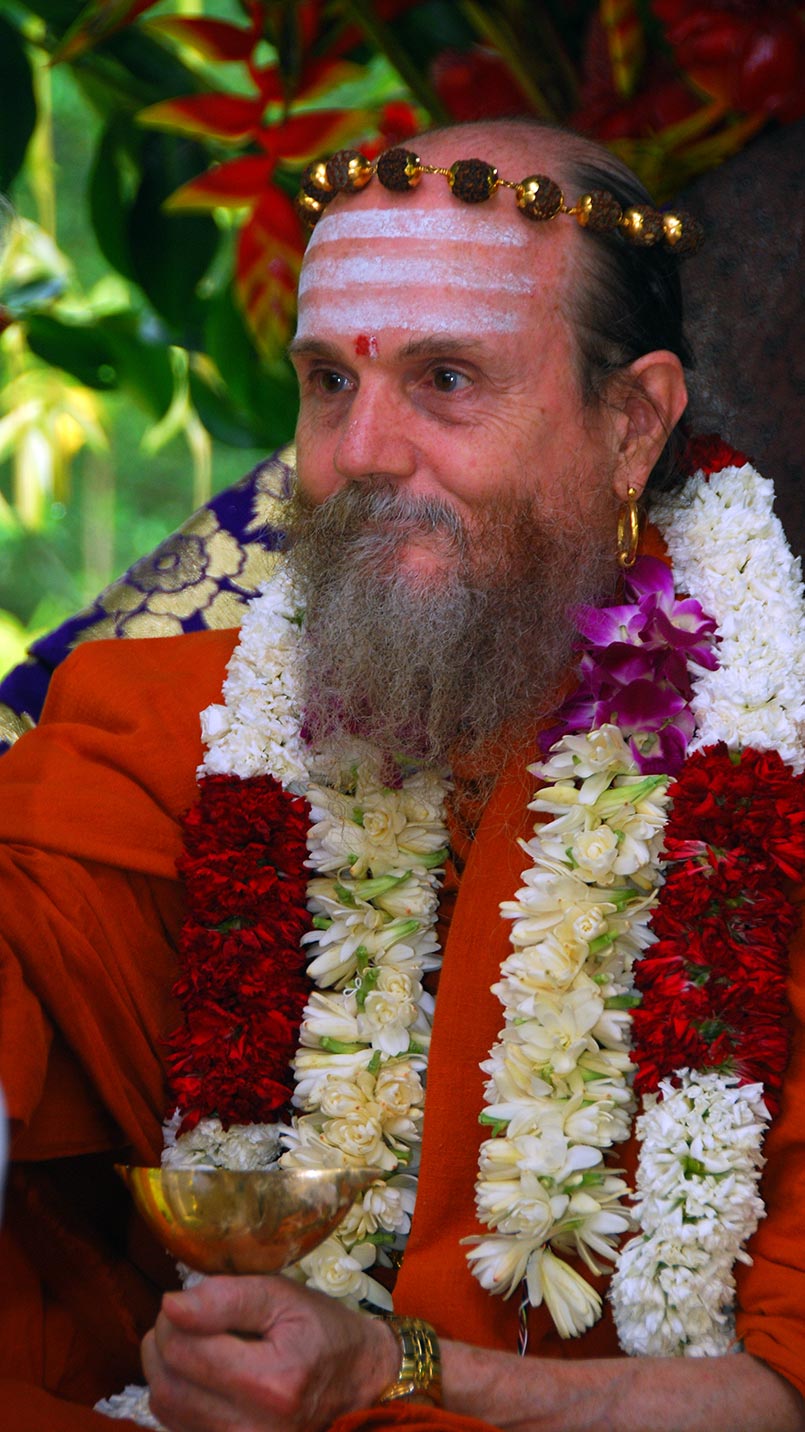There is No Satan or Hell, Focus on the Here and Now
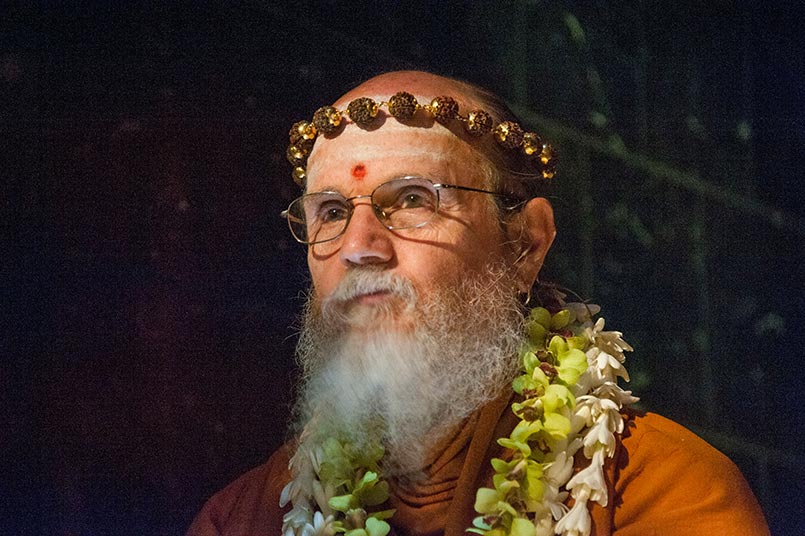
Bodhinatha’s later upadesha
There is no hell. Only “hellish” states of mind. The state of mind in the here and now is the same state of mind you’ll be in in the inner world after dropping off the physical body. Focus on being in the states of mind produced by the higher chakras. If we are constantly unnecessarily analyzing the present, thinking about the past, the future, it’s hard to control our meditations. We are meant to have mystical inner experiences not just as a one time event but today, tomorrow and the next day. The world is the place where we can improve our concentration and willpower.
Master Course Trilogy, Dancing with Siva, Merging with Siva, Lesson 53
Bodhinatha’s Latest Upadesha
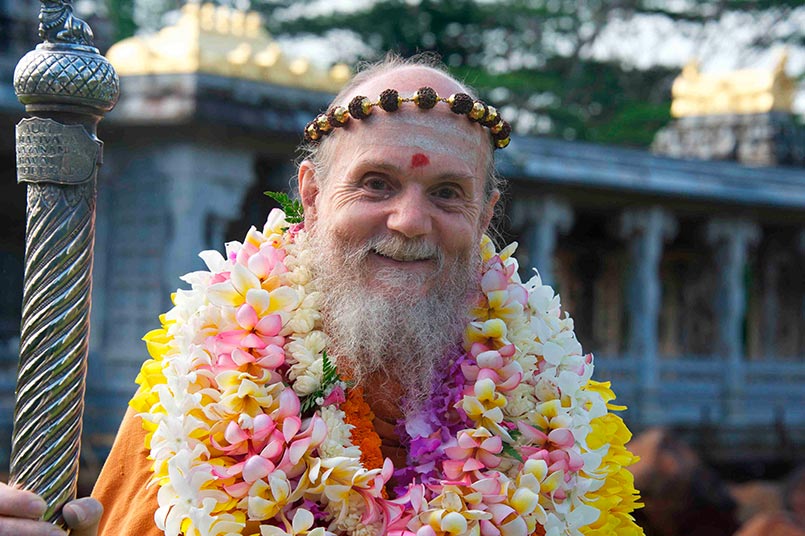
Bodhinatha’s Latest Upadeshas
Yamas, Niyamas – Remolding Our Character
Trilogy Commentary, LWS Lesson 8
Three Stages of Self Realization
Trilogy Commentaries DWS Lsn 1, MWS Lsn 365
Click here to go to an index of all of Bodhinatha’s and Gurudeva’s online audio.
Bodhinatha Path to Siva Commentaries
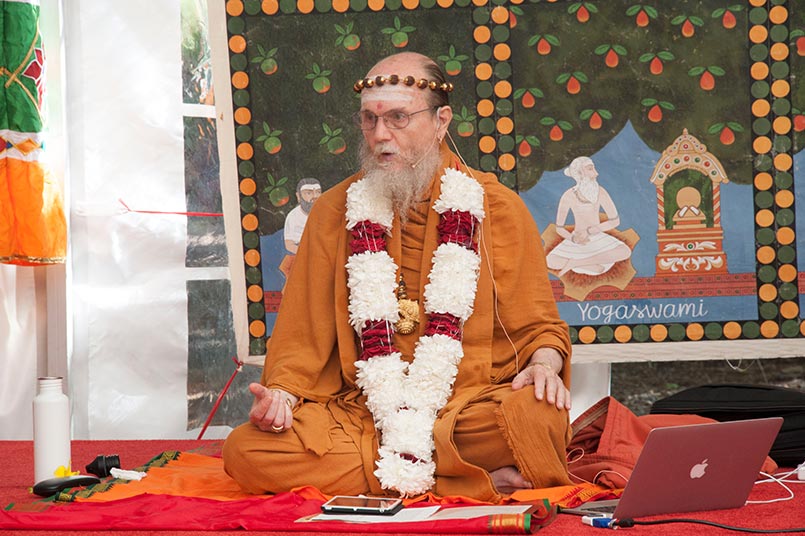
Also available on SivaSiva.App
Why Should we Learn a Cultural Art?
Become an accomplished human being; soar into the fourth dimension. Artists experience mountaintop consciousness. Having their source in humble devotion to the Lord, Saiva cultural arts: singing, drama, dance, playing musical instruments and creative skills strengthen concentration and are a form of worship. Religious art is an expression of the soul nature, bringing the beauty of the within into manifestation.
Path to Siva, Lesson 66
How Can We Be Strong Saivite Hindus?
Gurudeva: “The time has come for Hindus of all races, all nations, of all cultures, of all sects to stand up and let the peoples of the world know of the great religion of which they are one of the staunch adherents.” The first way of learning religion is to memorize its tenants. The challenge of living with Siva means bringing religion into the home, into the family, into our interactions with all other people. Kshama-forbearance and patience. Everything we experience we set in motion. Everything is just the next thing to do. Treat everyone in a friendly and inspiring way. Learn our religion and then live by it.
Path to Siva, Lesson 67
Click here to go to an index of all of Bodhinatha’s and Gurudeva’s online audio.
Bodhinatha’s Latest Siva to Path Commentaries (audio)

Also available on the mobile app – SivaSiva.App
How Can We Strengthen Our Temple?
What Is Our Form of Prayer?
How Do We Celebrate Festivals?
How Do We Observe Pilgrimage?
Click here to go to an index of all of Bodhinatha’s and Gurudeva’s online audio.
Bodhinatha’ s Latest Upadeshas
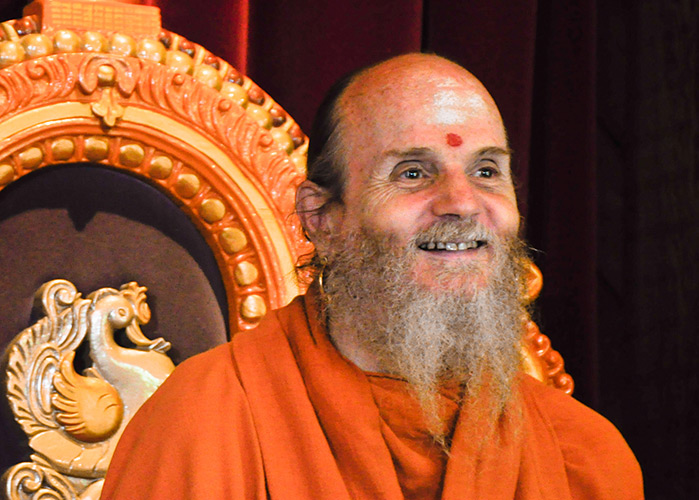
Also available on SivaSiva.App
What Is the Value of Spiritual Friends?
Friends who are fine, positive and good Hindus will help you most of all. It’s important for parents of teenagers to know their teenager’s friends. Our strength comes from mixing and interacting with others who are practicing sadhana. “The group helps the individual and the individual helps the group.”
Path to Siva, Lesson 58
How Do We Practice Karma Yoga
Pray to Lord Ganesha before beginning work. Turn everything you do into selfless service, seva, karma yoga. Work becomes worship. Hold the perspective of Sivanadiyar that you are the devoted servant of God Siva. “Do everything you do as Sivathondu. Give up this ‘I’ and mine.”
Path to Siva, Lesson 59
What Is the Purpose of the Temple?
“As you approach God’s home, you can feel the spiritual energy, and as you go inside you are engulfed in peace.” Trust in and open up to the deity. God is a very subtle presence. The temple and the murti within it are set up so that anyone can feel God’s presence once they have enough devotion. Go to the temple and through the sanctified murti see God. Kumbabishekam purifies the temple, infuses divine energy into the murti. The deity, during puja, resides in the murti. Continuous daily worship perpetuates and over the years strengthens the power of the temple.
Path to Siva, Lesson 60
How Do We Visit the Temple?
Be close to God by going to the temple. By shifting our minds to our religion the flow of positive karma is intensified. Being open and receptive receive the blessings of the deity. Bask in the divine energy radiating out from the murti. Creating a strong tie to the temple, perform a sacred act when you return home. Light a lamp in your home shrine; bring the vibration and summon the devas from the temple.
Path to Siva, Lesson 61
Click here to go to an index of all of Bodhinatha’s and Gurudeva’s online audio.
What Are Our Saiva Forehead Marks?
Bodhinatha’s Latest Upadeshas
Path to Siva Commentaries
What Are Our Saiva Forehead Marks?
The three stripes of vibhuti across the forehead signify trying to purify ourselves from the influence of anava, karma and maya. There are two ways we’re attached to the world, that which gives us pleasure and pain. We’re slowly changing our karma over a period of many lifetimes through wise action in the present. With humble action we work on lessening the ego-sense rather than enhancing it.
Path to Siva, Lesson 54
Master Course Trilogy, Living with Siva, Lessons 53-54
Click here to go to an index of all of Bodhinatha’s and Gurudeva’s online audio.
Class with Our Satguru
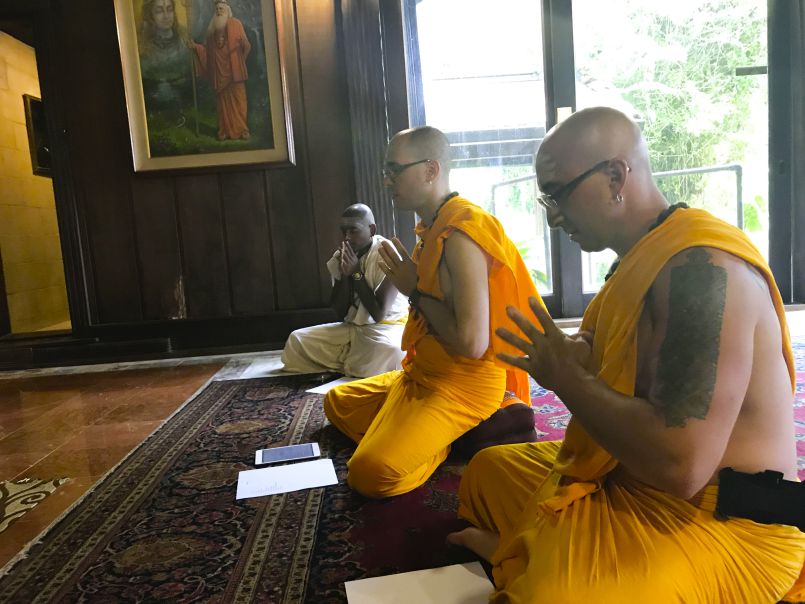
The Yogis and Natyam enjoyed several classes with their guruji these past few weeks, the subject being the Siva Sutras.
The Guru Chronicles explains:
The yogis around Maharishi Nandinatha were well versed in the Siva Sutras, whose aphorisms were regarded as the voice of Siva Himself--a puzzling, mathematically sophisticated set of fourteen aphorisms that seem to be about the Sanskrit alphabet, but on deeper reflection are a key to understanding the composition of the cosmos, showing how this language creates a mystical connection to the Divine from its very roots.
The early tantric traditions, from Kashmir Saivism to Saiva Siddhanta, share a love of the Siva Sutras, those obscure, arcane, mysterious verses that yogis study even in the 21st century to delve into the mystical apprehension of the universes, gross and subtle.
These fourteen sutras--revealed to Panini, who wrote them down as a kind of yogic science notebook for its time--emanated from the drum held in the raised right hand of Lord Siva Nataraja. This science of sound and words remained a secret to most, for only the illumined could comprehend it, being unspoken knowledge directly from the Supreme Lord and beyond the reach of the ordinary mind.
Sages like Sanaka, Sanatana, Sanatkumara, Patanjali and others were able to hear the transcendental sounds of Siva's drum but were unable to grasp the inner, core meaning of the aphorisms. Legend says they approached Maharishi Nandinatha seeking an explanation. Moved by the sincerity of their search for this rare knowledge, the satguru proceeded to elucidate the essence of the sutras. He offered 27 verses, which are the only written teachings of this primal preceptor that have survived the tides of time, and thus form the oldest scriptural text from this Saiva Siddhanta lineage. Terse and wise, it is known as the Nandikesha Kashika. Kashika means "the illuminator."
It is said that Sri Nandikeshvara, as Maharishi Nandinatha is also known, accomplished the feat of explaining the inexplicable due to two things: his profound God Realizations, which gave him a oneness with Siva within, and the completion of a difficult, some would say
impossible, austerity, that of reciting the epic chant Sri Rudram ten million times.
Nandinatha's Kashika is more a meditation than an explanation, a contemplation on thirty-six constituents of the universe, from the most subtle to the very earth on which we stand--Lord Siva's unfoldment of the cosmos through sound, specific sounds that are embedded forever in the letters of the Sanskrit language. These constituents, or tattvas, are at the heart of the cosmology of Saiva Siddhanta, for in them can be found every level of consciousness, every element, every sense and color, every energy, vibration and sound that exists. Saiva Siddhanta speaks of 36 tattvas in all. Knowing the tattvas, one knows all.
The ancient texts are dense, convoluted and opaque, for in those days the secrets of yoga and inner consciousness were thought too precious to be openly expressed. So they were concealed in a special kind of language, like a cryptogram, assuring that only those who were qualified would have access; others would be confounded. Indeed, reading these texts today is confounding, as this glimpse into the far past, into the heart of the progenitors of yoga, the Himalayan masters, proves.
Without the insights and commentary of knowers of God and Sanskrit pandits of the highest order, even these aphorisms, composed to elucidate the even more arcane fourteen Siva Sutras, may defy understanding.
Rainy Days
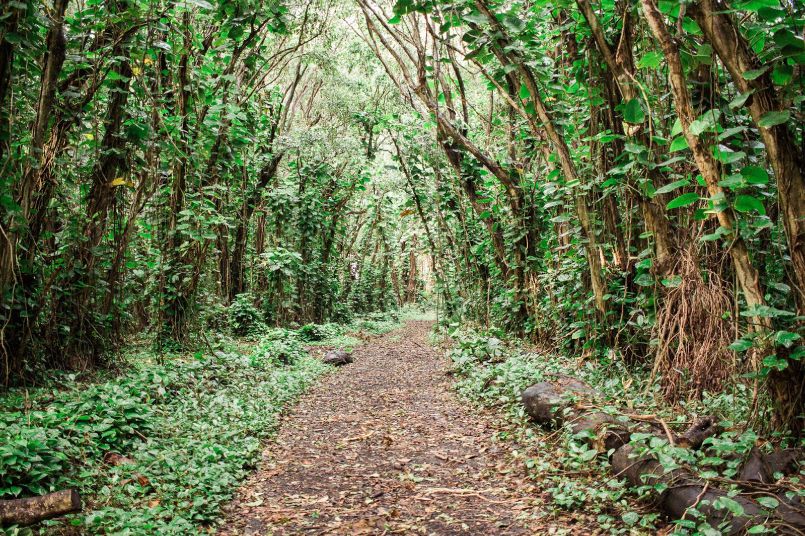
Right now the island of Kauai is getting blessings from the sky with a constant light rain that persists just enough to remind you it's wet outside. The monks are ending their phase is a quiet way and getting ready to work on various projects during their two day retreat. Some will harvest noni or carve away at tropical woods; some monks will study scripture late into the night. Satguru will go on his long contemplative walks while others will bake, stir-fry or griddle their way to a savory seva--we get our happiness by making others happy. I foresee an early morning bike ride, web work, app building, astrology reading, budget maintenance and many many other tasks these next few days.
The Deity remains throughout it all, Jiva really is Siva. Our monistic theist-Saiva Siddhanta is unparalleled theology that harnesses the power of creation right into the very heart of your being. While Siva remains detached from the tattvas, the bhogas and all karmic manifestations, He/She remains an ever-grounded part of the whole. From Parashiva, mysteriously to Parashakti and into you and your experience as Parameshwara.
Through sadhanas such as temple worship, yogic meditation and scriptural study, we reign-in the mind's thirst for the gunas and evolve into higher consciousness. The monks are here to root you on as you struggle through the perfect chaos of Parashakti and find your way back to the all-encompassing perfect order of Parashiva.
Love, light and upliftment is our creed. Sacrifice, responsibility and trust is our dharma. The Nandinatha Sampradaya is our lineage, family and history. God Siva is immanent love and transcendent reality. That means Parashakti and Parashiva, that means you, that means me, and that means everything is undoubtedly a perfect one being. Aum.
Why Are We Vegetarian? What About the Environment?

Bodhinatha's Latest Upadeshas
Path to Siva Commentaries
Why Are We Vegetarian?
Vegetarianism: Man's natural and noble diet with a minimum of hurt to other beings. The object of nutrition for meditation and for help on the spiritual path is to practice mitahara--eating a moderate quantity of quality clean fresh vegetarian food. Four types of food: fresh, dead, clean and dirty. "Siva's devotees know that a good diet is the best medicine. They drink two liters of water daily, minimize fried foods and avoid junk foods, white rice, white flour, processed sugar and degraded oils."
How Do We Treat the Environment?
"The Divine is present everywhere and in all things.
All Hindus feel they are guests on the planet with responsibilities to nature." Hindu prayers don't stop with people. Caring for the elements is found right in our various prayers going back all the way to the Vedas. We all can do something to help the environment. For it to be a huge impact the whole society has to move in the same direction."
Click here to go to an index of all of Bodhinatha's and Gurudeva's online audio.
This entry was posted on Wednesday, August 8, 2018 at 8:51 pm and is filed under Bodhinatha, Theology. You can follow any responses to this entry through the RSS 2.0 feed. You can leave a response, or trackback from your own site.
Why Do We Practice Ahimsa? Bodhinatha Commentary on Path to Siva
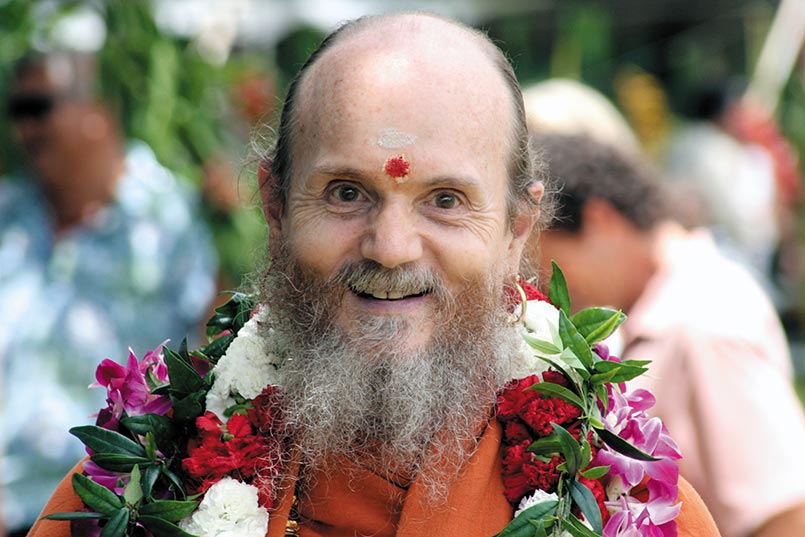
Bodhinatha's Latest Upadeshas
Path to Siva Commentaries
Why Do We Practice Ahimsa?
"Ahimsa is called the mahavrata, the great vow." Not harming others, is three-fold: thought, word and deed. Because you see God in everyone you would not want to hurt anyone. And there is the law of karma: Everything that happens to us, positive or negative, we attract due to past action. Use proper channels when harmed; never retaliate. Patanjali Yoga Sutras, Tirukural, Gurudeva's teachings all give examples of how to avoid harming others. T-H-I-N-K.
Path to Siva, Lesson 48.
Click here to go to an index of all of Bodhinatha's and Gurudeva's online audio.
From Our Gurus' Teachings
Archives are now available through 2001. Light colored days have no posts. 1998-2001 coming later.

